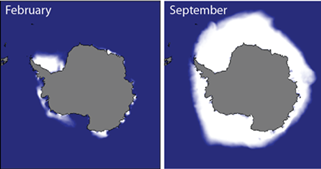 The Antarctic continent is around 14,200,000 sq km of which 98% is land. In the Austral winter, peaking in February, the sea ice surrounding Antarctica increases to more than double the same size again (around 18 million km2).
The Antarctic continent is around 14,200,000 sq km of which 98% is land. In the Austral winter, peaking in February, the sea ice surrounding Antarctica increases to more than double the same size again (around 18 million km2).
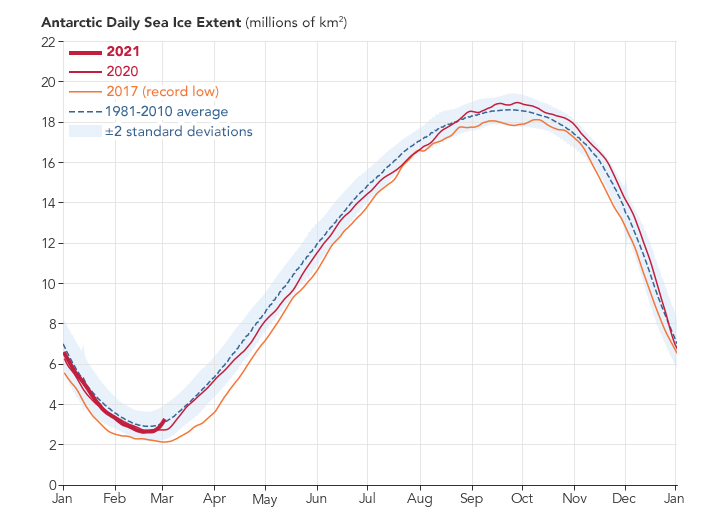 Late in the Austral summer, by late September, the area of sea ice declines historically (1981-2010) to around 3 million sq. km, although in recent years to less than that, with a record low of 2.29 million in February 2017.
Late in the Austral summer, by late September, the area of sea ice declines historically (1981-2010) to around 3 million sq. km, although in recent years to less than that, with a record low of 2.29 million in February 2017.
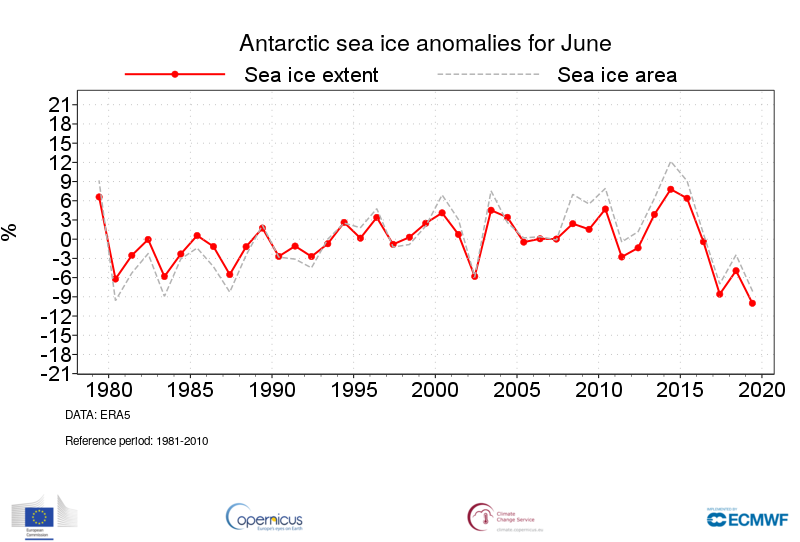 The average extent of Antarctic Sea ice cover for June from 1980 to 2020 shows little change until the last few years. The thick orange line denotes the anomalies for the climatological ice edge for June compared to the average for the period 1981-2010. While 2014 and 2015 were peak years for extent and area of sea ice, they declined steeply thereafter.
The average extent of Antarctic Sea ice cover for June from 1980 to 2020 shows little change until the last few years. The thick orange line denotes the anomalies for the climatological ice edge for June compared to the average for the period 1981-2010. While 2014 and 2015 were peak years for extent and area of sea ice, they declined steeply thereafter.
Analysis of weather station and satellite data, showing the continent-wide warming trend from 1957 through 2006.
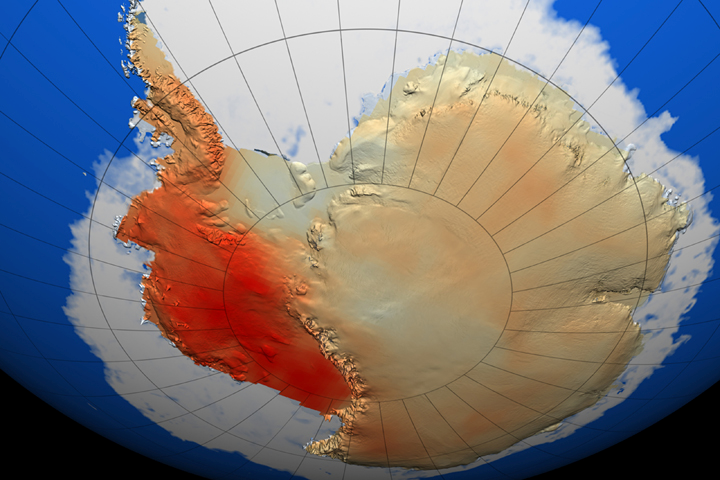 Some of Antarctica has been warming up; particularly strong warming has been noted on the Antarctic Peninsula (orange area upper left of the accompanying satellite photograph). A study by Eric Steig[1] published in 2009 noted for the first time that the continent-wide average surface temperature trend of Antarctica was slightly positive from 1957 to 2006. Over the second half of the 20th century, the Antarctic Peninsula was the fastest-warming place on Earth, closely followed by West Antarctica, but these trends weakened in the early 21st-century. Conversely, the South Pole in East Antarctica (tan area on right of accompanying satellite photograph) barely warmed last century, but temperatures will have increased at three times the global average in the last three decades. In February 2020, the continent recorded its highest temperature of 18.3C (64.9F), which was a degree higher than the previous record of 17.5C (63.5F) in March 2015.
Some of Antarctica has been warming up; particularly strong warming has been noted on the Antarctic Peninsula (orange area upper left of the accompanying satellite photograph). A study by Eric Steig[1] published in 2009 noted for the first time that the continent-wide average surface temperature trend of Antarctica was slightly positive from 1957 to 2006. Over the second half of the 20th century, the Antarctic Peninsula was the fastest-warming place on Earth, closely followed by West Antarctica, but these trends weakened in the early 21st-century. Conversely, the South Pole in East Antarctica (tan area on right of accompanying satellite photograph) barely warmed last century, but temperatures will have increased at three times the global average in the last three decades. In February 2020, the continent recorded its highest temperature of 18.3C (64.9F), which was a degree higher than the previous record of 17.5C (63.5F) in March 2015.
[https://en.wikipedia.org/wiki/Antarctica/climate change]
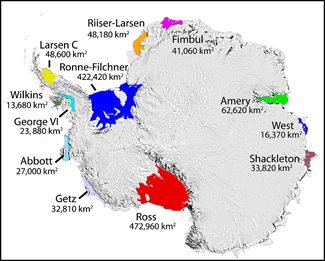 Antarctica is home to a number of ice shelves, along the coastlines.
Antarctica is home to a number of ice shelves, along the coastlines.
In recent years, ice shelves on the Antarctic Peninsula have experienced rapid disintegration.
The peninsula has warmed 2.5 degrees Celsius since 1950, making it one of the fastest-warming places on Earth.
In March 2008, the Wilkins Ice Shelf in Antarctica retreated by more than 400 square kilometers.
On October 14, 2011, scientists flying over the ice shelf at Antarctica’s Pine Island Glacier (PIG) made a startling discovery: there was a massive rift running across part of the glacier’s floating tongue.
The rift was 29 km long, 80 meters wide on average, and 50 to 60 meters deep.
When that crack reaches the other side of the ice shelf, it will send a huge new iceberg (880 sq. km. – 3 times the size of Dhaka Metropolitan Area) drifting into Pine Island Bay.
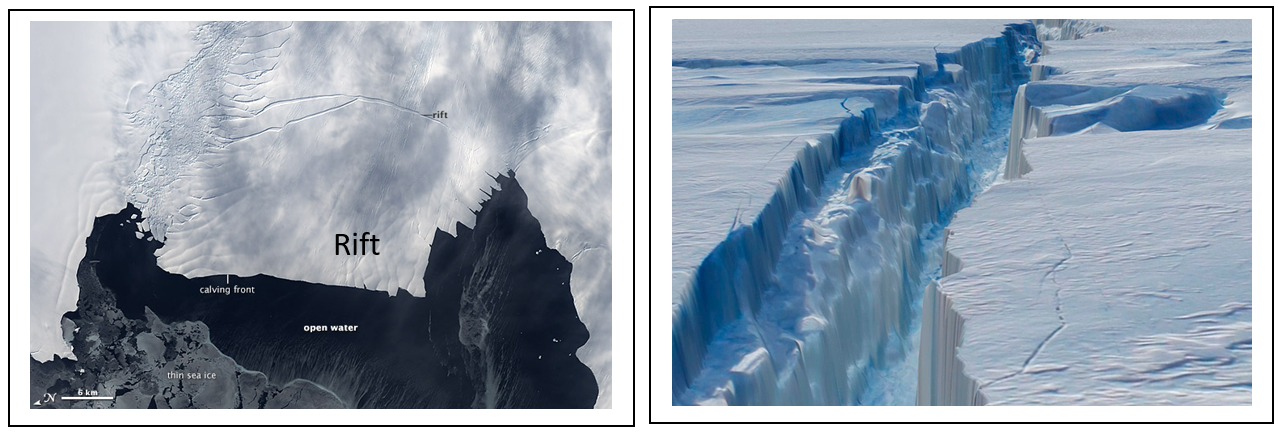
https://climate.copernicus.eu/sea-ice-cover-june-2019
Reference:
[1] Eric J. Steig (University of Washington), David P. Schneider (National Center for Atmospheric Research), Scott D. Rutherford (Roger Williams University), Michael E. Mann (Pennsylvania State University), Josefino C. Comiso (NASA Goddard Space Flight Center), and Drew T. Shindell (NASA Goddard Institute for Space Studies and Columbia University).-http://earthobservatory.nasa.gov/IOTD/view.php?id=36736
This website was produced with the support of the United States Agency for International Development (USAID) under the terms of USAID's Research for Decision Makers (RDM) Activity cooperative agreement no. AID-388-A-17-00006
Views expressed herein do not necessarily reflect the views of the U.S. Government or USAID. icddr,b is also grateful to the Governments of Bangladesh, Canada, Sweden and the UK for providing unrestricted/institutional support
68, Shaheed Tajuddin Ahmed Sarani Mohakhali, Dhaka 1212, Bangladesh
icddr,b is located at the Mohakhali area in Dhaka, just ask your driver for the "Cholera Hospital"
